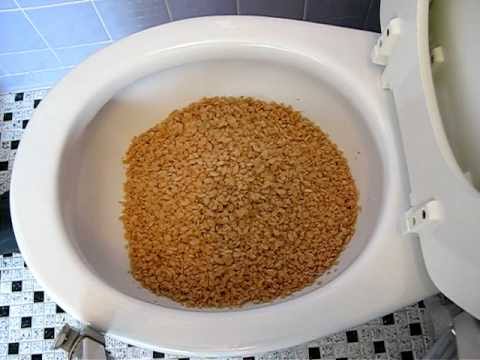We have unearthed this post on Flushing Food Down the Toilet? directly below on the internet and figured it made perfect sense to write about it with you on my blog.

Introduction
Many people are frequently faced with the dilemma of what to do with food waste, particularly when it pertains to leftovers or scraps. One common question that develops is whether it's okay to flush food down the toilet. In this short article, we'll explore the reasons that people could think about purging food, the effects of doing so, and alternate approaches for proper disposal.
Reasons why individuals could consider flushing food
Lack of awareness
Some individuals may not know the possible injury caused by flushing food down the toilet. They may incorrectly think that it's a safe practice.
Ease
Flushing food down the bathroom might feel like a quick and very easy option to taking care of unwanted scraps, specifically when there's no close-by trash can available.
Idleness
Sometimes, people might simply select to flush food out of large negligence, without considering the consequences of their actions.
Effects of flushing food down the bathroom
Ecological influence
Food waste that winds up in waterways can contribute to contamination and harm aquatic communities. Furthermore, the water used to purge food can stress water resources.
Plumbing issues
Purging food can lead to blocked pipes and drains pipes, triggering costly pipes repair work and inconveniences.
Kinds of food that need to not be purged
Coarse foods
Foods with fibrous appearances such as celery or corn husks can obtain tangled in pipes and create obstructions.
Starchy foods
Starchy foods like pasta and rice can soak up water and swell, bring about clogs in pipelines.
Oils and fats
Greasy foods like bacon or food preparation oils must never be flushed down the bathroom as they can strengthen and cause clogs.
Proper disposal techniques for food waste
Using a waste disposal unit
For homes geared up with waste disposal unit, food scraps can be ground up and flushed through the plumbing system. Nonetheless, not all foods are suitable for disposal in this fashion.
Recycling
Specific food product packaging materials can be recycled, decreasing waste and decreasing ecological impact.
Composting
Composting is an environment-friendly way to get rid of food waste. Organic products can be composted and made use of to enhance dirt for horticulture.
The significance of appropriate waste administration
Minimizing environmental injury
Correct waste administration methods, such as composting and recycling, aid lessen contamination and preserve natural resources for future generations.
Shielding pipes systems
By preventing the practice of flushing food down the commode, home owners can avoid pricey pipes repair work and preserve the stability of their plumbing systems.
Verdict
In conclusion, while it might be appealing to purge food down the toilet for convenience, it is very important to understand the prospective effects of this action. By taking on correct waste monitoring methods and taking care of food waste sensibly, people can contribute to much healthier plumbing systems and a cleaner environment for all.
FLUSH FOOD DOWN THE TOILET?
FLUSHING FOOD CAN CAUSE BLOCKED DRAINS IN YOUR HOME
All of the plumbing fixtures in your home are connected to the same sewer pipe outside of your home. This outdoor sewer pipe is responsible for transporting all the wastewater from your home to the Council sewer mains. Even small pieces of food that go down the kitchen sink can cause problems for your sewer. It should therefore be obvious that flushing larger bits of food, such as meat, risks a clog in either the toilet itself or the sewer pipes. Flushing greasy food is even more problematic because oil coagulates when it cools, coating the interior lining of your pipes.
THE TOILET IS NOT A BIN
Food isn’t the only thing that people shouldn’t be flushing down the toilet. People use the toilet to dispose of all kinds of things such as tampons, makeup wipes, dental floss, kitty litter and even underwear. Water goes to great lengths to educate residents about the high costs and stress placed on wastewater treatment systems simply from people flushing the wrong stuff down the toilet. It costs taxpayers millions of dollars each year, and homeowners thousands in blocked drain repairs.
FLUSHING FOOD IS A WASTE OF WATER
Flushing food is a waste of our most precious resource - water. In June this year Level 1 water restrictions were introduced to protect water supply from drought conditions. Much of New South Wales continues to be affected by prolonged drought with recent figures revealing up to 97 per cent of the state remains in drought. Depending on whether you have a single or dual flush toilet, every single flush uses between five and 11 litres of water. In the current climate this is a huge amount of water to be wasting on flushing food that should be placed in the bin (or better yet, the compost).
https://www.jabplumbingsolutions.com.au/blog/can-you-flush-food-down-the-toilet

I am very excited about Flushing Food Down the Toilet? and I am hoping you appreciated the blog entry. For those who enjoyed reading our post kindly remember to pass it around. Thanks for taking the time to read it.
About